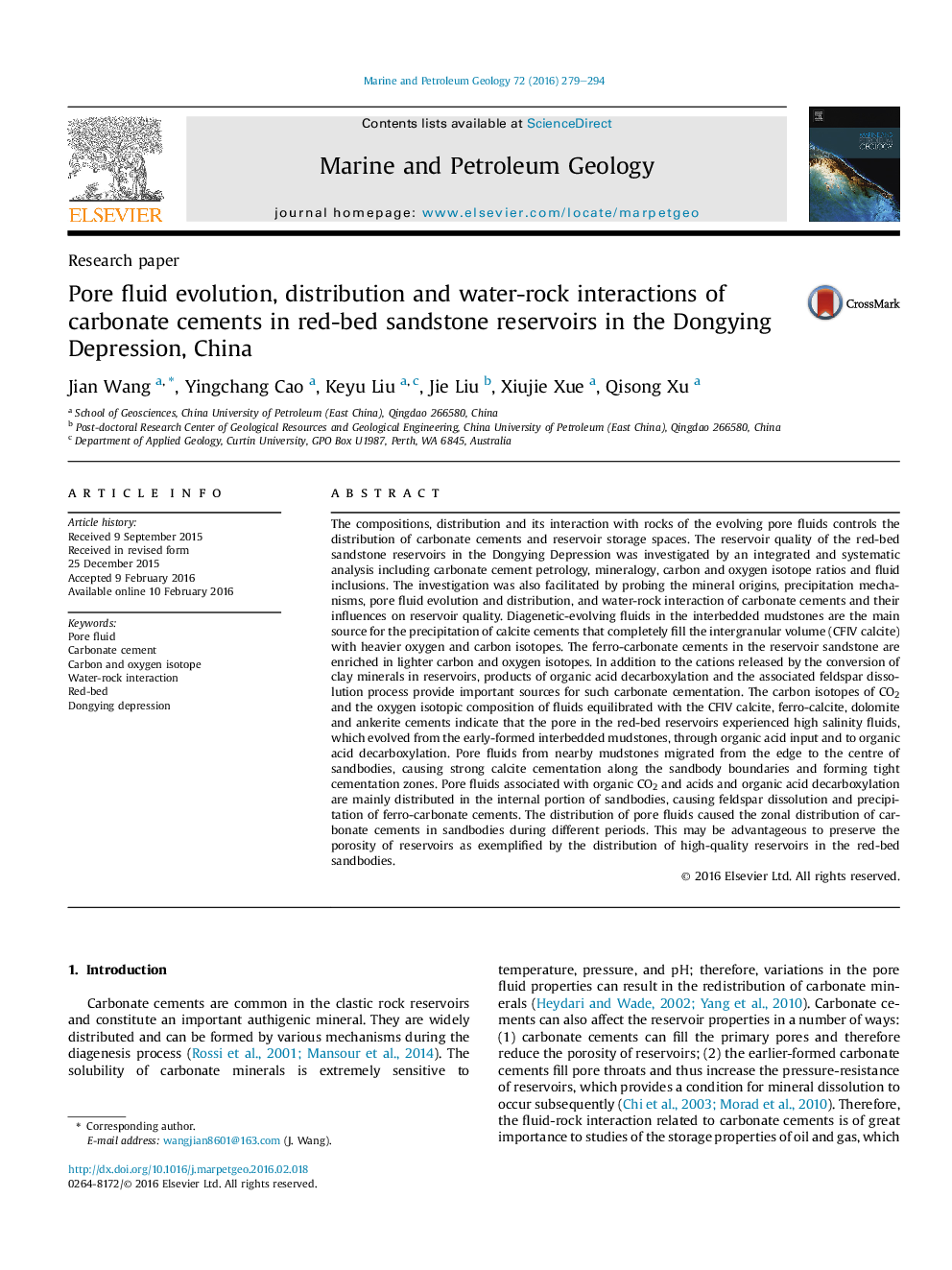| کد مقاله | کد نشریه | سال انتشار | مقاله انگلیسی | نسخه تمام متن |
|---|---|---|---|---|
| 6434499 | 1637155 | 2016 | 16 صفحه PDF | دانلود رایگان |

- A detailed analysis of characteristics of carbonate cements in red-bed reservoirs.
- An interpretation of material source and precipitation mechanism of carbonate cements in red-bed reservoirs.
- A recovery of evolution of pore fluids using isotopes of carbonate cements in red-bed reservoirs.
- Zonal distribution of pore fluids is advantageous to preserve porosity of reservoirs.
The compositions, distribution and its interaction with rocks of the evolving pore fluids controls the distribution of carbonate cements and reservoir storage spaces. The reservoir quality of the red-bed sandstone reservoirs in the Dongying Depression was investigated by an integrated and systematic analysis including carbonate cement petrology, mineralogy, carbon and oxygen isotope ratios and fluid inclusions. The investigation was also facilitated by probing the mineral origins, precipitation mechanisms, pore fluid evolution and distribution, and water-rock interaction of carbonate cements and their influences on reservoir quality. Diagenetic-evolving fluids in the interbedded mudstones are the main source for the precipitation of calcite cements that completely fill the intergranular volume (CFIV calcite) with heavier oxygen and carbon isotopes. The ferro-carbonate cements in the reservoir sandstone are enriched in lighter carbon and oxygen isotopes. In addition to the cations released by the conversion of clay minerals in reservoirs, products of organic acid decarboxylation and the associated feldspar dissolution process provide important sources for such carbonate cementation. The carbon isotopes of CO2 and the oxygen isotopic composition of fluids equilibrated with the CFIV calcite, ferro-calcite, dolomite and ankerite cements indicate that the pore in the red-bed reservoirs experienced high salinity fluids, which evolved from the early-formed interbedded mudstones, through organic acid input and to organic acid decarboxylation. Pore fluids from nearby mudstones migrated from the edge to the centre of sandbodies, causing strong calcite cementation along the sandbody boundaries and forming tight cementation zones. Pore fluids associated with organic CO2 and acids and organic acid decarboxylation are mainly distributed in the internal portion of sandbodies, causing feldspar dissolution and precipitation of ferro-carbonate cements. The distribution of pore fluids caused the zonal distribution of carbonate cements in sandbodies during different periods. This may be advantageous to preserve the porosity of reservoirs as exemplified by the distribution of high-quality reservoirs in the red-bed sandbodies.
Journal: Marine and Petroleum Geology - Volume 72, April 2016, Pages 279-294